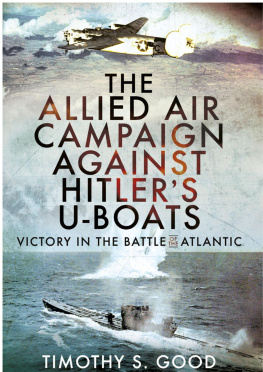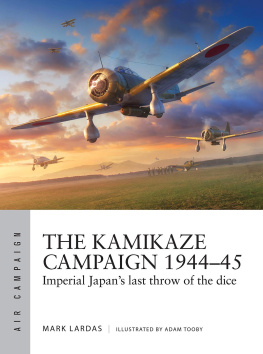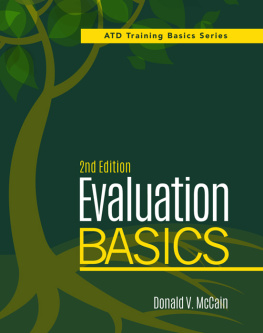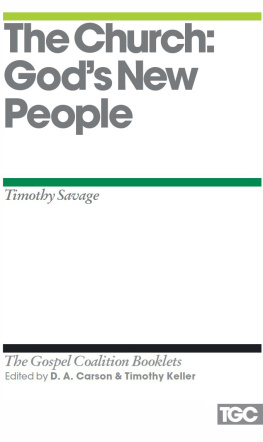
This edition is published by PICKLE PARTNERS PUBLISHINGwww.picklepartnerspublishing.com
To join our mailing list for new titles or for issues with our books picklepublishing@gmail.com
Or on Facebook
Text originally published in 1997 under the same title.
Pickle Partners Publishing 2014, all rights reserved. No part of this publication may be reproduced, stored in a retrieval system or transmitted by any means, electrical, mechanical or otherwise without the written permission of the copyright holder.
Publishers Note
Although in most cases we have retained the Authors original spelling and grammar to authentically reproduce the work of the Author and the original intent of such material, some additional notes and clarifications have been added for the modern readers benefit.
We have also made every effort to include all maps and illustrations of the original edition the limitations of formatting do not allow of including larger maps, we will upload as many of these maps as possible.
AN EVALUATION OF THE AERIAL INTERDICTION CAMPAIGN KNOWN AS THE TRANSPORTATION PLAN FOR THE D-DAY INVASION, EARLY JANUARY 1944 TO LATE JUNE 1944
by
Major Timothy A. Veeder
TABLE OF CONTENTS
Contents
TABLE OF CONTENTS
REQUEST FROM THE PUBLISHER
Illustrations
Page
Figure 1. This map outlines the length of coastline the Germans had to protect
Tables
Page
Table 1. Number of USAAF and RAF aircraft available on 28 March 1944
Table 2. Bomb Distribution on Rail Centers During the Transportation Plan
Preface
This research project was kindled by an interest in the use of air power in World War II. As I sat down and started narrowing the scope of the research topic, I became aware of the Transportation Plan; the interdiction campaign to deny the Germans ability to reinforce against the Allied invasion forces on D-Day. I chose this subject because it was something new and I had never heard it discussed before doing this research.
I would like to offer my thanks to Dr. Rich Muller for his guidance and inputs as my Faculty Research Advisor. Also, I would like to thank my family for putting up with me as I put the finishing touches on this project. I hope you as the reader will find this topic of interest.
Abstract
The various airmen leading the air war had great differences of opinion regarding what to target in the European theater of operations in support of Operation Overlord. The central leadership figures were Lt. General Carl Spaatz, USSTAF commander, and Air Chief Marshal Trafford Leigh-Mallory, AEAF commander. Each of these military men obviously wanted to support the planned Allied invasion, but they held differing opinions in regard to how to best support the invasion troops. They were greatly influenced by both personal experience and the advice of their respective scientific advisors, Walt W. Rostow and Dr. Solly Zuckerman. Also, Air Marshal Tedder, Deputy Supreme Allied Commander, and Air Marshal Harris, Commander of the RAF Bomber Command, contributed to the decisions to carry out the transportation interdiction campaign.
This research focuses on the period January 1944 through the end of June 1944. It includes a literature review of published memoirs and historic accounts of the individuals involved in the decision to implement the transportation plan. The archives of the Air Force Historical Research Agency were accessed to obtain actual accounts and directives implementing the pre-D-Day interdiction campaign. Numerous facts support a discussion of each of the airmens interests and the controversy that surrounded the transportation campaign.
The implementation of the transportation interdiction campaign resulted in the successful denial of German reinforcements to the Normandy beachhead. This success was a result of five significant factors. These were as follows: 1) the vast numbers of Allied aircraft relative to the Germans helped achieve and maintain air superiority; 2) the increased variety of targets which were attacked in implementation of the transportation plan; 3) the oil campaign with its impact on German aircraft availability and quality of German combat pilots; 4) the Germans indecision to commit their reserves based on the belief that the real invasion had not yet occurred; and 5) the impact of the scientific advisors on the military leaderships decisions. These factors were crucial in contributing to the success of the transportation plan in support of the D-Day invasion.
Chapter 1 Introduction
Interdiction delays, disrupts, diverts, or destroys an enemys military potential before it can be brought to bear against friendly forces. AFM 1-1
When the Allies began preparation for the invasion to regain a foothold on the European continent, the commanders developed several courses of action to ensure success. The development of an interdiction campaign which eventually became the transportation plan was one of these courses of action. This transportation plan began a two-part debate amongst the Allied leadership. The first part of the debate was whether execution of this interdiction campaign would detract from the overall air strategy already being carried out, while the second part questioned the selection of targets for interdiction by the Allied air forces. Several leaders played significant roles in the decisions that would eventually ensure air supremacy over the Allied invasion force while simultaneously denying enemy reinforcements from reaching the invasion battle zone.
Organization
This paper is organized into four chapters. Chapter One outlines the basic scope of this research document. Chapter Two introduces and examines the differences of opinion between the leadership, and the decisions that finally lead to the implementation of the transportation plan. Chapter Three outlines the basic objectives of the transportation plan, examines Allied and German preparations for the eventual invasion, and reviews the results of the campaign from both the Allied and German perspectives. Chapter Four concludes with an examination of the significant factors contributing to the success of the transportation plan.
The Problem
The various airmen leading the air war had great differences of opinion regarding targeting in the European theater of operations. The central leadership figures were Air Chief Marshal Trafford Leigh-Mallory and Lt Gen Carl Spaatz. Each of these men wanted to support the Allied invasion, but each held different views on how to best support the invasion troops. They based their ideas both on the advice of their respective advisors, Dr. Solly Zuckerman and Walt W. Rostow, and their personal experiences.
Leigh-Mallory believed the primary targets should be the transportation systems linking Germany and France. Spaatz, on the other hand, believed the best way to support the Allied invasion was through bombing strategic targets such as German oil and aircraft production facilities. He believed this would hinder movement of troops and supplies and guarantee air superiority. ACM Arthur Harris and ACM Arthur Tedder also contributed to the debate determining if the transportation plan would be put into effect. These men provided advice to Gen Dwight Eisenhower on the decisions to be made. The first decision regarded, Should there be an interdiction campaign prior to D-Day to prevent the Germans from being able to bring reinforcements to the landing zone? The second was, Should strategic air assets be allocated to support this interdiction campaign? Operation Overlord, as known today, was a great success in terms of both air attack and combined arms tactics. This paper reviews the transportation campaign and analyzes what significant factors contributed to the success of the transportation plan.









